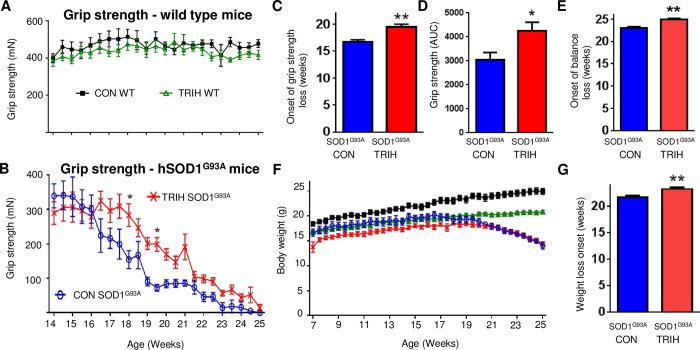Fig 3. Triheptanoin treatment delays the loss of hind limb grip strength in hSOD1G93A mice.
Starting at P35, female wild-type and hSOD1G93A mice were treated with triheptanoin (TRIH) or control (CON) diet until they were sacrificed. (A) No differences in grip strength was observed between triheptanoin (green open triangles, n = 15) and control treated wild-type mice (black filled squares, n = 12). (B) The grip strength over time differed in triheptanoin treated (red crosses, n = 8) vs. untreated (blue empty circles, n = 5) hSOD1G93A mice (p = 0.04, two way ANOVA), with treated mice having higher grip strength at 18 and 19.5 weeks (p<0.05 Bonferroni post-hoc test). (C) The onset of hind limb grip strength loss was delayed by 2.8 weeks in triheptanoin treated hSOD1G93A mice when compared to untreated hSOD1G93A mice (p = 0.002, t-test). (D) Overall hind limb grip strength shown as the area under the curve over time was increased in triheptanoin treated hSOD1G93A mice compared to control treated hSOD1G93A mice (p = 0.02, t-test). (E) The onset of balance loss in triheptanoin treated hSOD1G93A mice was significantly delayed by 13 days (p = 0.0016, t-test). (F) Body weights over time were significantly different between triheptanoin treated vs. untreated wild-type mice and treated vs. untreated hSOD1G93A mice. (G) The onset of body weight loss in triheptanoin treated vs. untreated hSOD1G93A mice (n = 5) was delayed (p = 0.007, t-test). * p<0.05, ** p<0.01. The onset of body weight loss was defined as the day where a loss of more than 10% in an individual mouse occurred relative to the mean body weight from week 12 to 17 was observed. Also all subsequent three body weight measurements were ≤ 90% of the original mean weight.

